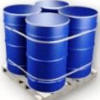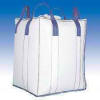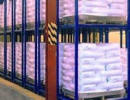We are the pioneer manufacturers of Bismuth Subcitrate Potassium, Pharmaceutical Excipients & Speciality Chemicals in India.The units have one or more of the certifications like FDA GMP, ISO 9001, ISO 22000, HACCP, REACH, Kosher & Halal |




Bismuth Subcitrate Potassium SDS MSDS of Manufacturers Suppliers
Bismuth Subcitrate Potassium CAS Number: 880149-29-1, Molecular Weight: 782.67 Anhydrous, Chemical Formula: C12H8BiK5O14 for Anhydrous
Properties and Specifications of Bismuth Subcitrate Potassium Manufacturers
Bismuth Subcitrate Potassium SDS, Safety Data Sheet
Material Safety Data Sheet
Section 1. Product Information
Product Name & Other Names: Bismuth subcitrate potassium.
CAS No.: 880149-29-1
EINECS EC Number: Not available
Relevant uses and uses advised against (if any): Industrial Manufacturing.
Section 2: Hazards Identification
GHS, Globally Harmonized System Classification in accordance with 29 CFR 1910
Classification according to Regulation (EC) No 1272/2008
Specific target organ toxicity - repeated exposure (Category 2), H373
Acute aquatic toxicity (Category 3), H402
Labelling according to GHS USA & Regulation (EC) No 1272/2008
GHS Label Elements Health Hazard |
Signal Words: Warning
Hazard statements:
H373: May cause damage to organs through prolonged or repeated exposure.
H402: Harmful to aquatic life.
Precautionary statements:
P260: Do not breathe dust/fume/gas/mist/vapors/spray.
P270: Do not eat, drink or smoke when using this product.
P273: Avoid release to the environment.
P280: Wear protective gloves/protective clothing/eye protection/face protection.
P314: Get medical advice/attention if you feel unwell.
P301+P312: IF SWALLOWED: Call a POISON CENTER or doctor/ physician if you feel unwell.
P302+P352: IF ON SKIN: Wash with plenty of soap and water.
P304+P340: IF INHALED: Remove victim to fresh air and keep at rest in a position comfortable for breathing.
P305+P351+P338: IF IN EYES: Rinse cautiously with water for several minutes. Remove contact lenses, if present and easy to do. Continue rinsing.
P501: Dispose of contents/container in accordance with local/regional/national/international regulation.
Section 3: Composition and Information on Ingredients
Product Name & Other Names: Bismuth subcitrate potassium.
CAS No.: 880149-29-1
Section 4. First Aid & Procedure
Always get medical attention after the first aid is over.
Ingestion: Induce vomiting if directed by medical personnel. Never give anything by mouth to an unconscious person. Get medical attention.
Skin: Immediately flush skin with plenty of water for at least 15 minutes. Remove and wash contaminated clothing and shoes before reuse. Get medical attention if irritation develops.
Eyes: Immediately flush eyes with plenty of water for 15 minutes, occasionally lifting upper and lower eyelids. Hold eyelids apart during irrigation. Get medical attention.
Inhalation: Remove person to fresh air. If breathing is difficult, give oxygen. If not breathing administer artificial respiration. Get medical attention.
Section 5. Fire Fighting Measures
Flash Point: N/A
Auto ignition Temperature: N/A
Fire/Explosion: Not considered to be a fire and explosion hazard.
Extinguishing Medium: Water fog or other medium appropriate to surrounding fire conditions.
Special Information: In the event of a fire, wear full protective clothing and NIOSH-approved self-contained breathing apparatus with full face piece operated in the pressure demand or other positive pressure mode. At high temperatures under fire conditions, it may produce toxic or irritating fumes. Uninvolved persons should evacuate to a safe place.
Section 6. Spills and Disposals
Personal precautions, protective equipment, and emergency procedures: Avoid breathing dust/fumes/gas/mist/vapors/spray. Use individual protective equipment (waterproof boots, suitable protective clothing, safety glasses, etc.). Restrict unprotected personnel from the area. Prevent any contact with hot surfaces. Do not approach facing the wind. Do not touch the spilled material.
Environmental precautions: Do not let the product enter drains, soil, or water sources.
Methods and materials used for containment Cleanup procedures and Storage: Pick up and arrange disposal without creating dust. Contain spilled material. Do not let the product enter drains. Use a shovel to put the material into a convenient waste disposal container.
Section 7. Handling and Storage
Precautions for safe handling: Apply according to good manufacturing and industrial hygiene practices. Ensure proper ventilation. In case of insufficient ventilation, wear suitable respiratory equipment. Wash thoroughly after handling. Do not drink, eat, or smoke while handling. Avoid contact with skin, eyes, and clothing. Minimize dust generation. Avoid breathing dust/fumes/gas/mist/vapors/spray. Avoid contact with eyes, skin, and clothing. Keep container tightly closed. Avoid ingestion and inhalation. Use individual protective equipment (waterproof boots, suitable protective clothing, safety glasses, etc.). Prevent any contact with hot surfaces.
Conditions for safe storage, including any incompatibilities: Store in cold, dry, and ventilated area away from heat sources and protected from sunlight in tightly closed original container. Keep air contact to a minimum. Store protected from heat, sparks and ignition sources and incompatible materials. Avoid contact with skin and eyes. Avoid inhalation of dust/mist/vapor. Do not store with incompatible materials like strong oxidizing agents, strong acids and alkalis.
Section 8. Exposure Controls & Personal Protection
Exposure Limits: Not established.
Engineering Controls: Use adequate exhaust ventilation to keep airborne concentrations below the allowable exposure limit.
Ventilation System: A system of local and/or general exhaust is recommended to keep employee exposures as low as possible. Local exhaust ventilation is generally preferred because it can control the emissions of the contaminant at its source, preventing dispersion of it into the general work area.
Personal Respirators (NIOSH Approved): For conditions of use where exposure to dust or mist is apparent and engineering controls are not feasible, a particulate respirator may be worn. For emergencies or instances where the exposure levels are not known, use a full-face positive-pressure, air-supplied respirator.
Skin Protection: Wear protective gloves and clean body-covering clothing.
Eye Protection: Use chemical safety goggles and/or full face shield where dusting or splashing of solutions is possible. Maintain eye wash fountain and quick-drench facilities in work area.
Section 9. Physical & Chemical Data
Appearance: Solid. White to off-white powder.
Odor: Odorless
Odor threshold: Not available.
pH Value: Not available.
Relative density: Not available.
Melting Point: Not available.
Boiling Point: Not available.
Flash point: Not available.
Decomposition: Not available.
Decomposition temperature: Not available.
Upper/lower flammability or explosive limits: Not available.
Vapor pressure: Not available.
Vapor density: Not available.
Evaporation rate: Not available.
Flammability (solid, gas): Not available.
Solubility: Soluble in liquor ammonia.
Viscosity: Not available.
Formula: C12H8BiK5O14 for Anhydrous and C12H14BiK5O17 for Trihydrate
Chemical Formula: 782.67 for Anhydrous.
Section 10. Stability and Reactivity
Chemical Stability: Stable under normal temperatures and pressures.
Incompatibility (Materials to Avoid): Strong oxidizing agents, , strong acids and alkalis.
Conditions to Avoid: Incompatible materials, exposure to moist air or water, excessive heat.
Hazardous Decomposition Products: Carbon dioxide, oxides of bismuth and potassium.
Hazardous Polymerization: Will not occur.
Section 11. Toxicological Information
Toxicity to Animals: Not available.
Carcinogenicity: Not listed as human carcinogen by IARC, ACGIH, OSHA and NTP.
Teratogenic Effects: Not available.
Mutagenic Effects: Not available.
Developmental Toxicity: Not available.
Reproductive Effects: No information available.
Section 12. Ecological Information
Toxicity to fish: No information available.
Persistence and Degradability: No information available.
Mobility: No information available.
Bioaccumulation/ Accumulation: No information available.
Results of PBT and vPvB assessment: No data available for assessment.
Section 13. Disposal Suggestions
Dispose of in accordance with all applicable local, state, and federal regulations at an approved waste disposal facility, strictly as per local, state and central law.
Section 14. Transport and Label Information
DOT USA, TDG Canada & ADR/RID Europe: Not regulated.
IMDG/IMO: Not regulated.
IATA/IMO: Not regulated.
Section 15. Regulatory Information
USA:
SARA 302: Not listed.
SARA 311/312 Hazards: See section 2 .
Section 16. Other Information
European Labeling in Accordance with EC Directives:
H373: May cause damage to organs through prolonged or repeated exposure.
H402: Harmful to aquatic life.
Hazard Symbols:
Xn = Harmful.
Risk Phrases:
R48 Danger of serious damage to health by prolonged exposure.
R52= Harmful to aquatic organisms.
Disclaimer:
**************************
Our company provides this MSDS sheet in good faith but makes no representation as to its comprehensiveness or accuracy. This SDS sheet is intended only as a guide to the appropriate precautionary handling of the material by a properly trained person using this product. The above information has been compiled from various sources and has the possibility of discrepancy and being out-dated information. Individuals receiving the information must exercise their independent judgment and do further search in determining its appropriateness for a particular purpose. In no case shall our company be liable to loss or damages by the product user.
**************************
Manufacturers
Anmol Chemicals
S-8, SARIFA MANSION, 2ND FLANK ROAD, CHINCHBUNDER, MUMBAI 400009, INDIA
TEL: (OFFICE) 91-22-23770100, 23726950, 23774610, 23723564. FAX: 91-22-23728264
e-mail: anmolc@mtnl.net.in

Exports to USA, Canada, UAE, Dubai, South Africa, Tanzania, Kenya, Nigeria, Egypt, Uganda, Turkey, Mexico, Brazil, Chile, Argentina, Europe Netherlands, Italy, Spain, Germany, Portugal, France, Malaysia, Indonesia, Thailand, Vietnam, Korea, Japan, etc.
Copyright and Usual Disclaimer is Applicable. 12 January, 2022
Barter
I do not bow down at your door
I do not bargain for booty
Your promise of the heaven does not lure me
Your hell-fire does not scare me
I do not even know the proper method of prayer
I do not offer any thing to you
Ages have gone by and I have not seen you my lord
Yet my love for you keeps waiting for you.